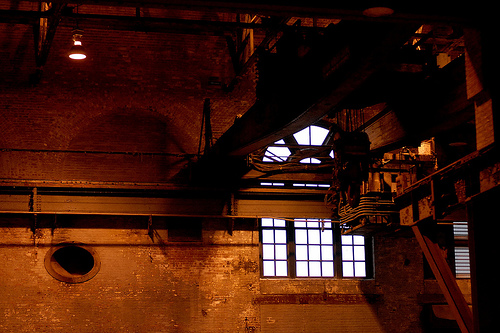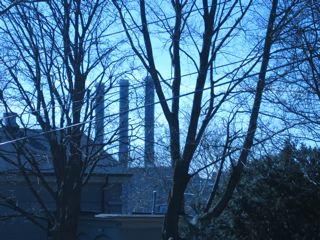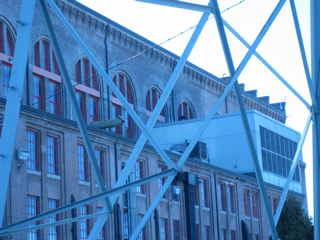The essence of architecture’s participation in and creation of memory is the interplay between the constructed building and the people with whom it interacts. As the building weathers, decays, is rebuilt, so too does the psychological interpretation of that building change over time. Through their generative functions, the Manchester Street and South Street Stations act on the environment around them, thus altering the experience of those who live with them. Simultaneously, the stations rely on human control and assistance to perform those functions at all. This exchange of actions and reactions is present in more or less any building, but these two stations illuminate the dynamic especially well.
Anecdotally, the experience of living near the stations seems to have made impressions on Providence residents beyond the readily apparent ones like light and sound. A current Florida resident who commented on South Street’s entry in the Providence architecture website artinruins.com (which, by the way, has a trove of great interior photos of the station) writes of the changes that took place at the plant over the years and the “dark smoke issuing forth from stacks,” but the most powerful parts of his entry are complex impressions of specific incidents. Touring the station in the summer of 1979, the writer experienced what he describes as “generators screaming, boilers throbbing with hot gasses and flashing water, steam shooting at supersonic speed to turbine nirvana.” Later, he writes of an averted catastrophe on a fall night in 1968, when the generator accidentally disconnected from a turbine and sent safety valves slamming shut with the “most dramatic nocturnal thundering.”
Clearly, South Street is a more than a mechanical presence in this writer’s mind; it takes on an imagined animate character outside of that seemingly static role. A present-day job listing for a control room operator at Manchester Street conjures a similar impression of the interaction of human body and industrial mechanism. A sampling of the items listed under “working conditions” demonstrates the tangible impact of the station on its human caretakers: work in areas of high noise, extreme temperature, high voltage, rapidly rotating equipment; work in cramped and/or confined positions with heavy lifting; work in conditions where fumes, dust, and gases are present. Even as that operator controls the plant’s equipment and systems, so too he or she must confront the direct influences that the plant has on his or her physical person.

Interior of the South Street Station; image from flickr.com user aDeparture
The impact of the stations on those living close to them is clear, but it’s less obvious what their effect might be on those who know them only as a far-off landmark. Again on artinruins.com, the man who served as superintendent on South Street’s asbestos abatement project writes: “As you walked thru the structure you could feel the past and new that there was history there that only the people who were a apart of this would ever know.” When I tried to explain which building I was researching to a friend, she asked: “Oh, is it in the distance? Then I think I know what you mean.” Manchester Street isn’t really in the distance; it’s a short walk from Wickenden Street and only minutes away from Brown University’s campus. But its appearance of impermeability and cold mechanism makes it seem farther away than it is, and as the superintendent states, its history may remain untouched by those who only view it from afar. Tellingly, the public access park alongside the station is empty even of most graffiti and decorated with a wide variety of garbage.
How, then, do residents of the city relate to a structure that they rarely meet eye-to-eye? Unlike a bridge or a highway, the Manchester Street and South Street stations do not invite physical interaction on a daily basis; rather, they can remain in the distance indefinitely, accomplishing their purpose while appearing only on the horizon and potentially active only in the imaginations of those who view them from that distance. They are monuments to history and industry that often go unvisited; what, then, will be their role in the future of Providence’s collective memory?

Even to those who have had the experience of being close to the physical structures of the stations, an element of imagination remains essential to their interpretation. The same writer who remembered the visceral experiences of South Street Station above ends his entry with a nod to the unknowable nature of the structure’s presence, writing the following description whose essence might someday apply to Manchester Street as well: “An architectural treasure whose slow evolution from 1919 forward still conceals fascinating mysteries. Switch panels of marble, control room partitions of copper, a bygone era still accessible through frosted glass framed by industrial black steel frames.”

Back to Hannah Sheldon-Dean's Project: The Manchester Street Generating Station
